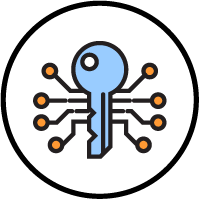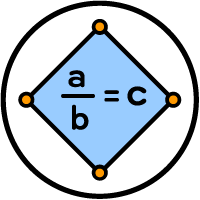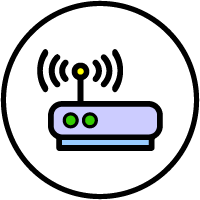Six major research areas in Information Engineering
AI, Big Data and Multimedia Processing
The explosive growth of data, which we have been witnessing since the onset of the new century, has greatly reshaped our everyday life. The data being generated at an unprecendented rate present significant challenges in storage, computation, and communication. Our research focuses on the development of new methodologies and systems to meet such challenges. In particular, we are interested in studying the following topics:
- Machine learning methods for large-scale data analytics and distributed computing environment
- Optimization techniques under streaming and distributed settings
- Efficient sketch or summary of large amount of data
- Scalable algorithms for probabilistic inference
Our multimedia research focuses on intelligent processing of image, video, and computer graphics. Current research topics range from image retrieval on the internet, face recognition and photo management, video editing and tracking, 3D object reconstruction and retrieval.
Our work on “Intent Search” has been adopted by the image search engine at “Bing.com” of Microsoft. Our work on “Dark Channel Prior”, a novel image prior we discovered, has won the Best Paper Award at the International Conference on Computer Vision and Pattern Recognition (CVPR) 2009.
Faculty: Wanli OUYANG, Dahua LIN, Tianfan XUE, Xiangyu YUE
Related website: Multimedia Laboratory
Cyber-security and Applied Cryptography
Our general focus is on Applied Cryptography, and Security and Privacy in Cyber Systems. We are interested in devising practical yet provably secure cryptographic schemes for emerging computing paradigms, and for increasingly complex applications involving seemingly conflicting requirements when the participants are mutually untrustful. These include webs, clouds, smart phones, embedded systems, and other distributed computing systems.
On a high level, some recent projects of our group include:
- Cloud computing – searchable encryption, attribute-based encryption, proof of storage, outsourced computation, audit and provenance
- Privacy-enhancing technologies – accountable privacy, anonymous credentials, electronic payment, reputation and revocation, structure-preserving cryptography
- Leakage-resilience – provable security, side-channel information leaks
- Embedded system security – firmware analysis, static analysis, dynamic analysis, symbolic execution, lightweight cryptography
- Smart grid security – tools and methodology to evaluate the security of smart grid components like smart meters, communication protocols and corresponding software, privacy-preserving smart metering and data aggregation
Faculty: Wing Cheong LAU, Kehuan ZHANG, Sherman SM CHOW, Sze Yiu CHAU
Related websites:
Information and Coding Theory
Information theory is a discipline at the intersection of probability theory, statistics, statistical mechanics, computer science, information engineering, and electrical engineering, that studies the fundamental limits of communication and storage of information data.
Coding theory is a discipline that studies the properties of codes and their use in various applications such as data compression, data transmission, and data storage. The field is partly driven by the need to find practical schemes for approaching the fundamental limits that are found in information theory.
Researchers in the Department of Information Engineering have made significant contributions to information and coding theory, including the invention of the sub-field of network coding – a field that incorporates ideas of coding into networks to achieve significant gains in the areas of routing and data storage. They have also made fundamental contributions in the development of information inequalities; bounding, evaluating, and determining the optimality of achievable rate regions in multiterminal settings; and designing graphical methods and algorithms for classical and quantum information settings.
Some of the current research questions being investigated by this group include the study of:
- Fundamental limits of communication in multiterminal settings – in particular developing new upper and lower bounds for achievable rates using powerful novel extensions of traditional ideas.
- Finite blocklength coding theorems suitable for delay-constrained communication settings, using unconventional code constructions based on stochastic processes.
- Nonconvex functionals arising in multiterminal settings with regards to their properties such as subadditivity/tensorization, convex reformulations, properties of their maximizers, and their relation to functional analysis.
- Automated theorem proving for information theory, more precisely, using computer programs to automatically derive coding theorems for multiuser communication settings; and in reducing the computation required for verification of entropy inequalities.
- Design and analysis of error-correction coding schemes for achieving reliable classical and quantum information processing.
- Design and analysis of graphical models for classical and quantum information processing, in particular of low-complexity algorithms operating on them.
- Implementation issues and performance analysis of BATS codes, a class of efficient network codes that can solve the “multi-hop curse” in wireless communication.
Faculty: Raymond WH YEUNG, Pascal O VONTOBEL, Chandra NAIR, Amin GOHARI, Cheuk Ting LI
Related websites:
Internet Engineering and Networked Applications
Our department is especially strong in networking research that covers a broad scope from software used to control network activities to hardware for transporting data over wired and wireless channels. We also do research in incentive mechanisms for networks by applying ideas from game theory and economics.
The research on Internet technologies and applications includes three main areas:
- Infrastructure-related issues – broadband technologies, next generation Internet protocols, intelligent routing, quality-of service control, broadcasting and multicasting, multimedia streaming, distributed content caching and routing, intelligent content adaptation.
- Internet applications – on-line social networks, multimedia content distribution and streaming systems (including P2P networking), intelligent bilingual search engines, multiparty video conferencing systems, eLearning systems etc.
- Network Economics – network service provider competitions, new business models for Internet and wireless networks, new incentive mechanism design such as auction, contract, and bargaining for emerging network services, incentives for social networks.
Faculty: Guoliang XING, Jack YB LEE, Changhong ZHAO, Zhenyu YAN, Hongkei CHEN
Related websites:
Optical Communications and Networking
Optical communication prevails over other technologies for long distance and/or high-capacity transmission. It plays a crucial role in the now indispensable Internet infrastructure that supports all services, spanning from telecommunication, finance, medicine, entertainment, to social networking. It constitutes the major infrastructure for core, metro and access networks. Our major thrust in lightwave system and network research is to investigate the architecture and the enabling technologies to achieve highly efficient and flexible optical systems/networks. The current research topics include:
- Design of optical metro/access network infrastructure for telecommunications, including passive optical networks (PON) for fiber-to-the-home (FTTH), radio-over-fiber (RoF) systems for fiber-wireless systems and mobile backhaul/fronthaul.
- Visible light communications (VLC) and optical-wireless systems for stationary and mobile links, for indoors, underwater, and vehicle-infrastructure communications.
- Design of optical and electronic techniques for high-speed and robust optical communication systems, including direct- and coherent-detection systems, advanced spectral efficient modulations, digital signal processing techniques, and optical performance monitoring.
- Network planning and resource optimization of elastic optical networks, including wavelength assignment and routing, protection and restoration, traffic grooming, and optical multicast.
Faculty: Lian Kuan CHEN, Calvin CHAN
Related website: Lightwave Communications Laboratory
Wireless Communications and Networking
Wireless and Networking research in the Faculty of Engineering at the Chinese University of Hong Kong (CUHK) covers a wide range of areas including peer-to-peer systems, cognitive radio systems, cooperative communications, cellular systems, adaptive transmission and reception, diversity combining techniques, multiple input multiple output (MIMO) technologies, spread spectrum methods, RF/microwave engineering and IC design, Low-temperature Co-fired Ceramic technology (LTCC) / antenna design, ultra wideband (UWB) technologies, media access control (MAC) protocols, mobility management and control algorithms, wireless LAN/Mesh, and ad-hoc/ sensor networking and RFID systems.
Faculty: Soung Chang LIEW, Xiaojun LIN, Angela YJ ZHANG, Tat Ming LOK, Henry H CHEN, Wenjing YAN
Related websites:





